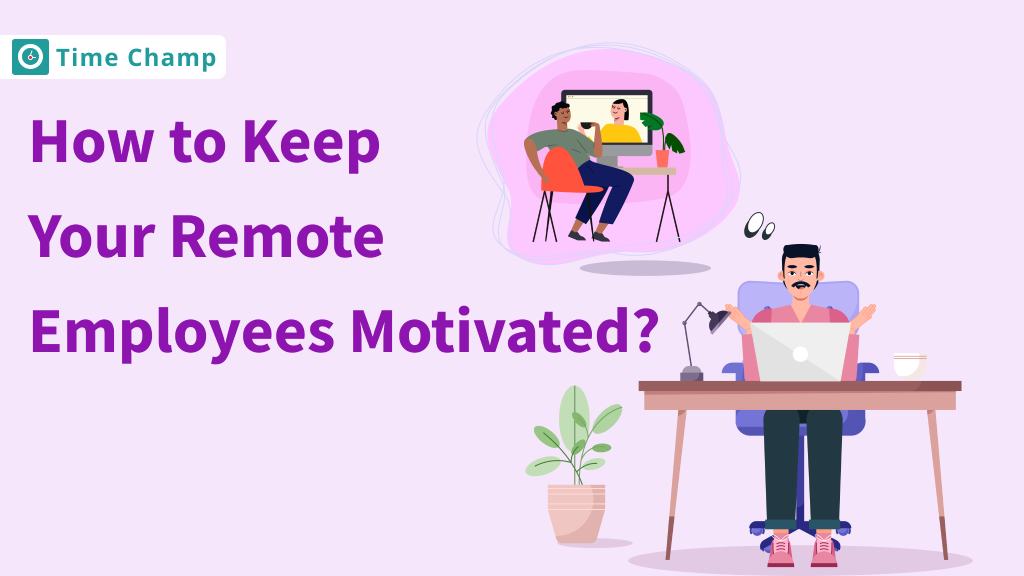Unlock the secrets to evaluating and boosting employee satisfaction. Explore actionable tips and techniques for measuring and enhancing workplace morale.
What is Employee Satisfaction?
Employee satisfaction refers to the level of satisfaction of employees with their jobs and the workplace. It is about whether they are content with their job, are able to balance between work and family or other obligations, receive fair remuneration, have good relations with other employees, and have a positive perception towards the organizational environment.
Hello managers, let us discuss about employee satisfaction. It is very important for the success of your team. If the employees are content with what they are doing, they do it efficiently. Well, what is it all about? It is about whether your team members are content with what they do, whether they feel they are paid enough, whether they get along well with their co-workers and whether they enjoy working for your organization. The happy employees are the ones who make your team unique, so let’s make sure that they are happy and enjoying their work! Now let us discuss how the employee satisfaction is important for the organizations.
Why is Employee Satisfaction Important?
Any organization must ensure that its employees are happy. When your team members are satisfied with their work, they can work well with other members of the team and foster a positive working culture. In a happy workplace, employees can express themselves and their ideas and everyone is productive.
Employee Satisfaction is the main factor that contributes to employee retention. If your employees are happy, they will not be searching for other jobs to do. This means that your company can retain its employees and reduce the costs of having to recruit and train new employees.
There are ways how you can increase the level of satisfaction of your employees and some of these are offering promotions, offering competitive wages, and acknowledging their work. This will not only retain the current employees but also attract more employees to join your company.
Why should you Measure Employee Satisfaction?
Can you just imagine how beneficial it is to know the level of satisfaction of your employees so that you can know how they feel about their positions and the company? When you understand their emotions, you can take steps that improve their job satisfaction, which in turn improves productivity and decreases turnover.
In this way, you can assess the satisfaction of the current HR policies and practices by evaluating the happiness of the employees. You will get feedback on pay, perks, promotions, and choice of working hours. This assists you in identifying what is effective and what is not effective in your policies. With this knowledge, you can make the right decisions on what areas to invest your time and money.
Employees have to be taken care of and it has to be made clear that they are appreciated. It is also important to take some time to check the level of satisfaction of the employees from time to time, this shows that you care for the employees and the company.
How to Measure Employee Satisfaction?
Here’s something cool you can do to check how satisfied your employees are: give these methods a try! They are like little tools that you can employ to have an idea of how satisfied your team members are with their work. It is somewhat similar to asking them how they feel, don’t you think? Well, let’s get started and find out what these methods can offer to you!
Employee Satisfaction Survey:
- The employee job satisfaction survey is a common method that is used to measure how happy employees are.
- This survey asks questions of employees about their workload, job satisfaction, and total experience.
- Questions usually cover things like pay, benefits, workload, and support from you.
- Employees can convey their opinions and thoughts which can lead to great understanding and support from you.
- This survey helps in better understanding and improving happiness in the workplace.
One-on-One Meetings:
- One-on-one meetings are also a method that is used to measure employment satisfaction.
- This method involves discussions between you and the employee.
- You can ask questions about career goals and difficulties the employee may be having.
- Employees can share their feelings openly with you.
- Finally, one-on-one meetings can assist you with a great understanding of the job satisfaction of employees and can form better relationships with the team members.
Exit Interviews:
- When employees are leaving a job, an exit interview is taken by you to collect insights into their time at the company.
- It includes questions like reasons for leaving the job, and about his experience.
- With this feedback, employers can initiate retention strategies in the workplace.
Employee Net Promoter Score (NPS):
It measures employees’ opinions about their company. The NPS is calculated depending on the employees’ reaction to one question: “On a scale of zero to ten, how probable would you rate your likelihood to recommend our company as a workplace”.
Based on the reactions, employees can be segregated into the following groups.
Detractors:
Employees who respond between zero and six are detractors. This rating indicates that these people are not satisfied with their job. It means that they are ready to leave the organization at any time. Detractors can tell the company a lot about how the company can improve.
Passive:
Employees who answered seven or eight are passives. This rating indicates that they don’t feel strongly about the company. It’s crucial to avoid turning these employees into detractors. So, take steps to turn them into promoters.
Promoters:
Employees who responded between nine and ten, those employees are promoters. Promoters can gain knowledge of what the organization is already doing well.
By using the below formula, companies can find their net promoter score.

This yields a score that ranges from -100 to 100.
Scores, that are greater than zero are taken as good scores. A score below zero represents that a company has some work to do on employee job satisfaction.
Employee Turnover Rate:
Employees who are not happy in their working environment may begin searching for other job opportunities. Employee turnover is very expensive for you. It lowers productivity, creates disruption at the workplace, and hurts other team members.
The higher the level of employment satisfaction, the lower the chance of changing a job. A high turnover rate is an indicator of a problem in the organization. It implies that you and the executives should cooperate. Employees desire to be appreciated and they look forward to being challenged through their work. The majority of employees also are interested in having good relationships with each other.
Signs of Employee Satisfaction:

Let’s look at some clear signs that show your employees are happy and satisfied in their roles.
Low Absence Rate:
The stability of low absenteeism and low turnover rates show that the employees are content and regularly attend work signifies the good culture of the workplace as well as satisfactory job experience.
Strong Team Collaboration:
Collaboration in the strongest teams is a teamwork example, where the members are effective in communication, sharing ideas, and supporting each other, thus, they create an individually productive and harmonious atmosphere.
High Retention Rates:
High retention rates signify those employees who are contented and elongated with their stay with an organization for a long time. Thus, it is a signal of a positive working environment, a culture of support, and opportunities for self-improvement.
Role of Employee Satisfaction in Enhancing Company Culture:
You see, employment satisfaction is one of the best ways of enhancing the company’s culture. It is a well-known fact that when employees are happy and satisfied with their jobs, it is evident in their level of productivity, innovation, and morale. It is like a domino effect, right? When employees are happy, the entire workplace is happier and more vibrant.
Increased Productivity:
When the employees are happy, motivated and engaged, they will become more productive. With their excellent performance, companies can see success.
Improved Employee Morale:
When employees believe they are respected and supported, their morale rises, leading to high job satisfaction. When they are motivated, display a positive attitude towards the work and their workplace.
Innovation and Creativity:
Innovation and creativity become the culture as happy employees are more encouraged to share their ideas, take risks, and discover new solutions that can assist the organization in continued improvement, and growing competition.
Positive Company Culture:
The key to a company’s positive reputation lies in the happiness of employees who show professionalism, competence, and ethics, and ultimately result in the company image, attract top candidates for employment, and build up customer confidence and loyalty.
Increased Employee Engagement:
Increased employee engagement directly results from satisfied employees who are engaged with their work. They also contribute to the company’s objectives, culture, and success.
Reasons for Employee Dissatisfaction:
Now, it is time to discuss some of the factors that cause job dissatisfaction among employees.
Inadequate Compensation:
Inadequate compensation undervalues employees’ importance and leads to financial problems, and demotivation, all of which affect job satisfaction and loyalty to the company.
Poor Management:
Poor leadership creates chaos, dissatisfaction, and no direction which makes the employees morally down, unproductive, and unsatisfied in the long run.
Lack of Career Growth:
A lack of chances for career development and advancement suffocates ambition and prevents employees from the chance to grow in their careers and feel a sense of belonging to the organization.
Lack of Appreciation and Recognition:
The lack of recognition for the employees’ contributions and achievements makes them feel undervalued and demotivates them. Hence, the commitment to the company goals and objectives is compromised.
Poor Work-Life Balance:
Long working hours and having enough time for personal work can cause burnout, stress, and dissatisfaction, which in turn, lead to a fall in performance and retention rates within the company.
Having discussed the causes of employees’ dissatisfaction, it is time to consider ways to increase the level of satisfaction and make the employees happier.
Strategies to improve employee satisfaction:
Here are some strategies that could help to improve the level of employee satisfaction and keep them happy.
Offer a Competitive Salary:
Offering an excellent salary that is equivalent to what other people doing the same jobs are earning is a great way to keep employees happy. When employees believe they are fairly compensated, they are more likely to be more satisfied with their jobs and work harder.
Be Transparent:
Transparency is about the extent to which management discloses information to its employees about what is happening in the organization. Employees need to know what is happening because this will make them feel trusted and appreciated by their employers. This in turn makes them happier and more content in the work that they do.
Create a Positive Work Environment:
Making a good working environment implies making the workplace a pleasant and. enjoyable place to be. Comfortable people, supported, and appreciated at work are happier and more content with their jobs.
Provide Opportunities for Growth:
Be committed to developing the employees in terms of training, mentorship, and advancement. Thus, employees can experience a sense of fulfilment, as well as remain loyal to the organization.
Establish Clear Expectations and Goals:
One of the best strategies to ensure that employees are happy at their workplace is to establish goals and objectives. When everyone knows what is expected of them and what the goal is, it is much easier to feel satisfied and to perform.
Employee Satisfaction and Employee Engagement:
Employee Satisfaction:
Employee job satisfaction is the extent to which employees are satisfied with their jobs and the overall environment. It includes aspects such as how much the job is enjoyable, work-life balance, wages, interactions with co-workers, and organizational climate.
Employee Engagement:
Employee engagement is defined as the level of interest that employees have in the company and their desire to work for the company. In other words, it comes down to the notion that an ideal employee is motivated, engaged, and willing to work towards the achievement of the organizational objectives and overall success.
Employee Satisfaction VS Employee Engagement:
Employee Satisfaction:
- Well, employment satisfaction is a measure of how satisfied the employees are with their jobs and the environment.
- It is all about them feeling happy and satisfied with the positions they are in. You can measure it by how satisfied they are with their working conditions and the salaries they get.
- Therefore, when your team members are happy and satisfied, it implies that they are content with their positions and the working conditions.
Employee Engagement:
- Employee engagement is simply a measure of how much employees feel involved with their job and the organization.
- Well, it is all about the attachment that employees have towards their work and the company.
- You see, it is about whether your employees are willing to give their best and work hard to the best of their abilities.
Boost Employee Satisfaction with Time Champ: Unlocking Its Powerful Features for Workplace Well-being.
Time Champ:
Time Champ is like that one tool that is always there to help your employees make their work easier. Well, it assists them in time management and that in turn makes the workers happier. They can easily manage their tasks, track their deadlines, and have that satisfaction when they complete their tasks. And here is the best part – it does not end there.
Time Champ also helps to create a positive attitude towards work since it assists employees in setting goals and monitoring their performance. When they get the results, they are encouraged to work harder, and at this point, working is not a burden to them. It is all about the work-life balance and Time Champ. Well, it is like the magic that makes everything work.
Goal Setting and Progress Tracking:
Time Champ makes it possible for all staff to define and track their goals, helping them to build self-esteem and giving them motivation as well. Having well-defined targets and obtaining certain results should improve job satisfaction in terms of setting directions and making a purpose.
Task Prioritization:
Time Champ enables employees to organize their tasks in terms of urgency and responsibility, hence, they can only handle the most important tasks and stress will be reduced because of better workload management.
Time Tracking and Reporting:
With Time Champ every employee will be able to get a clear understanding of how much time they spend on a task and a project, which gives a possibility to view their productivity and progress. With these analytics, employees may be encouraged to be more conscious of how they spend their time at work and take better control of their work-life balance.
Transform your workplace culture and elevate employee satisfaction levels with Time Champ – the key to efficient time management and happier teams!
Unlock the secrets to boosting employee satisfaction and revolutionize your workplace today!
Optimize your workplace dynamics and employee contentment with Time Champ – Seize the opportunity now!
SignUp for FreeBook DemoConclusion
Employee satisfaction plays a crucial role in the company’s success, as it improves productivity and workplace culture. When employee well-being is a priority, it leads to a positive environment, reduces turnover costs, and attracts top talent. The continuous measurement of employment satisfaction and strategic interventions are the main factors in creating a good working atmosphere that is conducive to engagement and innovation for long-term growth.
Frequently Asked Questions
Employee satisfaction refers to the satisfaction and fulfilment employees experience in their jobs, which is shown by the happiness they have in work conditions, chances for growth, and overall well-being in the organization.
The satisfaction of employees is measured through surveys, feedback sessions and performance reviews and, therefore, the factors considered include job fulfilment, work-life balance, communication, recognition and growth opportunities within the organization.
The factors that influence employee satisfaction consist of supportive management, chances for career growth, work-life balance, fair pay, recognition, a positive work environment, meaningful work, and good communication.
This approach creates the following benefits: increased productivity, higher employee retention rates, improved morale, better customer satisfaction, stronger employer branding, and finally, good financial performance for the organization.
Employee satisfaction is a major factor that influences the retention rate. Satisfied employees are more likely to stay with the company for a long time, and it helps to reduce the turnover costs, and at the same time preserve the institutional knowledge and expertise within the company.








